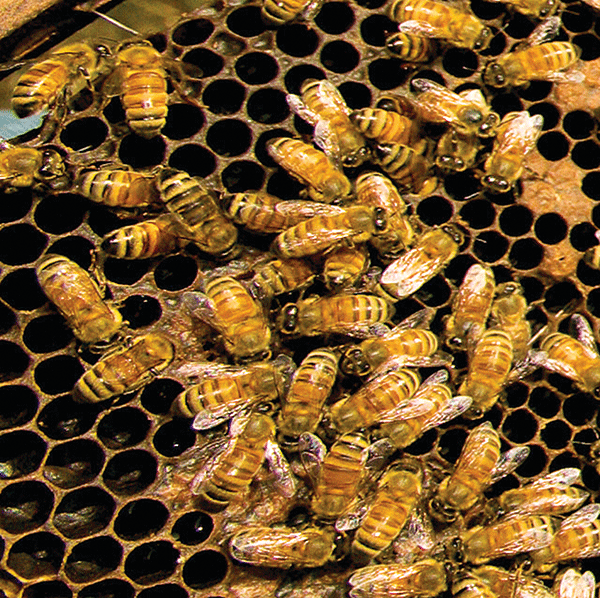
Even as two new weed control technologies are on the horizon for Mid-South agriculture, regulatory challenges continue in the process of getting federal approval for crop chemistries, says John Campbell.

JOHN GORDON CAMPBELL
“Things we were able to previously get approved by the Environmental Protection Agency, we may not be able to get today, even when we point out specific examples that they granted five years ago for other products,” he said at the annual meeting of the Mississippi Boll Weevil Management Corporation and the Mississippi Farm Bureau Federation Cotton Policy Committee.
Campbell, who has served as director of the Mississippi Department of Agriculture and Commerce’s Bureau of Plant Industry for the past four years, has recently been named deputy commissioner for MDAC.
The Bureau of Plant Industry, a regulatory and service division of MDAC, is charged with protecting the agricultural and horticultural interests of the state from harmful insects, diseases, and weeds.
Stay current on what’s happening in Mid-South agriculture: Subscribe to Delta Farm Press Daily.
With the new dicamba and 2,4-D technologies expected to be available in 2016, requirements for their use will be more stringent than for current restricted use chemistries, Campbell says.
“In December 2012, Commissioner of Agriculture Cyndi Hyde-Smith named a special focus group, composed of five farmers, to research these technologies and make recommendations to the Bureau of Plant Industry board for measures to be considered to mitigate the risks associated with the introduction of these technologies, and to formulate ways to use them safely and responsibly.”
In January 2015, after many meetings with the companies involved, recommendations were submitted to the board, Campbell says. “The board accepted them, and based on what we know today, this is the plan for these technologies when they hit the market:
“Before growers can use these technologies, they will have to complete an MDAC-approved training course. Mississippi State University is in the process of developing an online module to address issues such as off-target movement, volatility, tank cleanout — everything associated with these products.”
24/7 online training planned
The module will be available 24/7 for farmers to go online and complete the training, Campbell says. “This will be a requirement on the 24-C label — that this training must be successfully completed before these products can be used.
“You also will be required to keep records of your applications of these products for two years, and you also must keep sales receipts for the products for two years. Further, no applications can be made in winds exceeding 10 mph.
“These requirements are consistent with those for our restricted use products, except for keeping sales receipts. It’s also current regulation that seed dealers keep records of name, variety, lot number, amount sold, etc., so their information can be accessed if needed.”

Droplet size is important in reducing drift, as shown in this display.
The farmer panel also recommended that programs be made available to offset the cost of equipment to reduce drift, such as hooded sprayers, nozzles, etc. But, notes Campbell, “That is only a recommendation to the board, and isn’t mandated by MDAC.”
Three years after the technologies are in use, he says, “We will measure the effectiveness of the program and decide if changes are needed. A lot of time has been spent on this — we know these technologies are needed by our growers, and we also know there are challenges and risks associated with them. We need to be good stewards of these technologies if we’re going to keep them long term.
“We hope this education and training requirement isn’t burdensome, and that it will be helpful in making sure that these technologies will be around for a long time.”
This is the second year, Campbell says, for a Section 18 permit for Transform for control of the sugarcane aphid, and Bayer has also obtained registration for its product, Sivanto.
��“This give us two tools for dealing with this pest,” he says. “With what is known of this aphid and its ability to develop resistance, there is direct language in our authorization letter telling us to get a resistance management plan in place.
“In January, we submitted a Section 18 request for Centric, pretty much the only other product with any efficacy against this pest. We’ve been working with the EPA on the Centric request since then. We submitted a very good package to the agency — Angus Catchot at Mississippi State University and Jeff Gore at the Delta Research and Extension Center did a lot of the heavy lifting on putting the package together.
“I’ve been to Washington twice for face-to-face discussions with EPA leadership about this Section 18 request,” Campbell says, “but I think we’re at the point now it probably isn’t going to be approved. We haven’t given up yet, but in my talking with them just recently, they seemed not very keen on granting the Section 18.
Pollinator issues continue at forefront
“They noted that the product is a neonicotinoid and mentioned the issue of pollinators and neonics. That’s the environment we’re dealing with now for all of our insecticides — they’re really being gone over with a fine-toothed comb.
“Fortunately, to this point sugarcane aphid pressure hasn’t been as heavy as it could have been, and we hope the two products we have available will carry us through the season.”
In May, Campbell says, the White House released its national strategy on pollinator health and announced a task force, co-chaired by the USDA and the EPA.

Pollinator protection is probably one of the most complex issues confronting U.S. agriculture," says John Campbell.
“It’s a comprehensive program that includes habitat, diseases, mites, pesticides, and other factors,” he says. “The White House strategy directly referenced state-managed pollinator plans and local level programs to address the needs for each state.
“A week after that, the EPA put out a policy document and is soliciting comments on state pollinator plans. The comment period closes July 29. We’ve worked with our national association, Farm Bureau, and other stakeholders to get comments prepared so we can provide a good, positive response about how these state plans have been successful.”
A component of the Mississippi plan, Campbell says, is ways to measure the plan’s effectiveness — “which is something nobody in the country has put forth yet; we’ve been a leader in this. Mississippi is referenced in the White House strategy and the EPA document. We have an opportunity to be a leader in how to measure the effectiveness of these plans.”
The EPA’s pollinator plan is “basically two buckets,” he says. “One is for crops that are under contract for pollination: almonds, blueberries, vegetables, etc. What the EPA is proposing is label language that says, during bloom, you can’t use any product that is acutely toxic to pollinators.
“The other bucket is for crops that aren’t under contract for pollination, including cotton, corn, soybeans, rice, etc. The EPA is telling us that state management plans are the way to mitigate risk — that if these state plans are successful, we will have mitigated the risk and there will be no reason for additional requirements.
“This is probably one of the most complex issues confronting agriculture on the national level. I applaud Mississippi Farm Bureau, Extension, and others for the lead they’ve taken in developing a pollinator stewardship program. It’s an outstanding accomplishment.”
CONNECTING THE DOTS ON TECHNOLOGY: A VIDEO SERIES
Silent Shade Planting Co. uses 21 different software programs
Software allows Jeremy Jack to track each operation on 8,500 acres
About the Author(s)
You May Also Like




